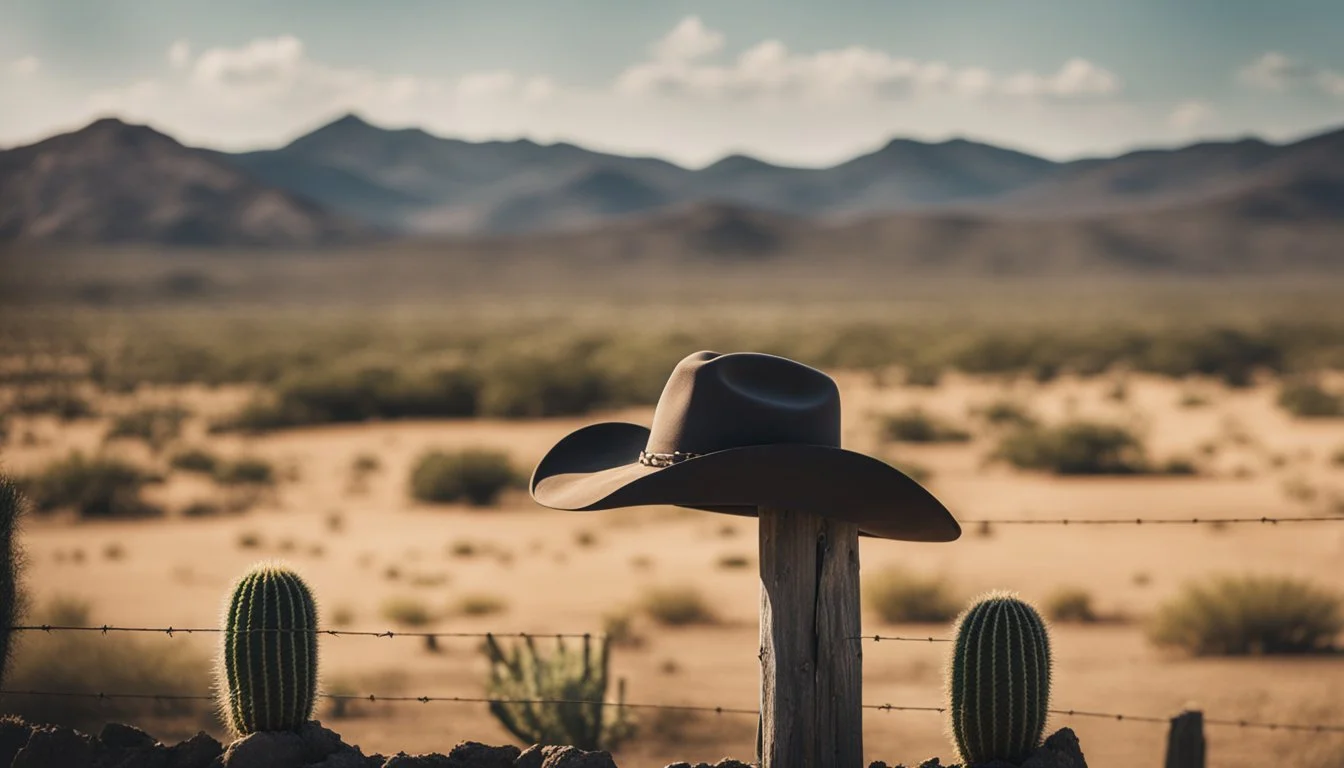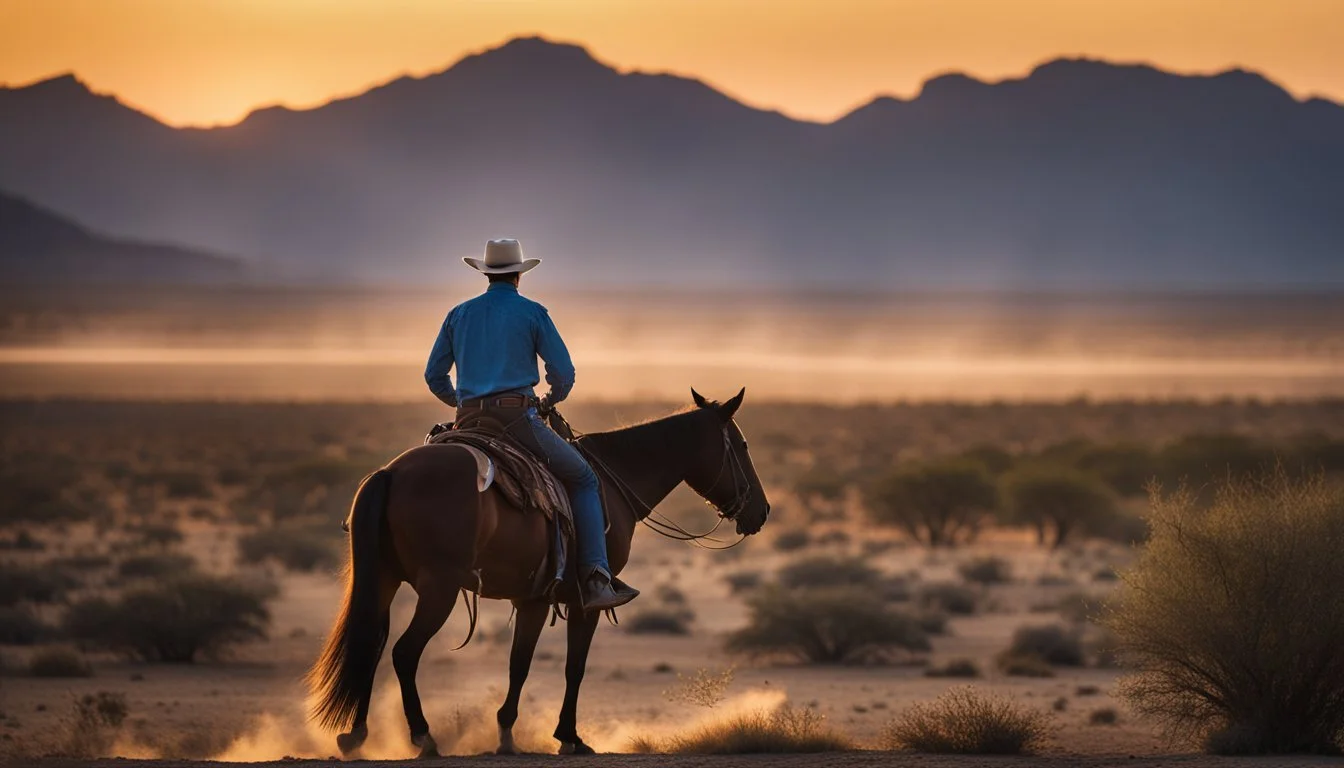6 Must-Watch Films About Texas John Slaughter's Cochise County
Exploring the Old West's Legendary Lawman
Texas John Slaughter, a legendary figure in the American Old West, left an indelible mark on Cochise County, Arizona. As a former Texas Ranger turned lawman, Slaughter's exploits in bringing order to the wild frontier have captivated audiences for generations.
Several films have been produced to showcase Slaughter's remarkable life and career in Cochise County. These cinematic portrayals offer viewers a glimpse into the challenges and triumphs of this iconic lawman as he worked to establish justice in a lawless land. From gunfights to cattle rustling, these movies bring the excitement and danger of the Old West to life through the lens of Slaughter's experiences.
1) The Last Picture Show (1971)
Peter Bogdanovich's adaptation of Larry McMurtry's novel captures the essence of small-town Texas in the early 1950s. Set in the fictional town of Anarene, the film follows the lives of three teenagers navigating their final year of high school.
Timothy Bottoms, Jeff Bridges, and Cybill Shepherd deliver powerful performances as the main characters grappling with love, loss, and an uncertain future. The stark black-and-white cinematography emphasizes the desolate landscape and fading dreams of the townsfolk.
Ben Johnson and Cloris Leachman won Academy Awards for their supporting roles, bringing depth and authenticity to the film's portrayal of older generations. Their characters serve as mentors and cautionary tales for the younger protagonists.
The Last Picture Show offers a poignant exploration of coming-of-age in a dying West. Its unflinching depiction of sexuality and small-town dynamics sparked controversy upon release, but has since been recognized as a classic of American cinema.
More information on The Last Picture Show
2) The Three Burials of Melquiades Estrada (2005)
"The Three Burials of Melquiades Estrada" is a neo-Western film directed by and starring Tommy Lee Jones. It tells the story of Pete Perkins, a ranch foreman who seeks to fulfill a promise to his deceased friend by burying him in his Mexican hometown.
The film explores themes of loyalty, honor, and cross-border tensions. It was inspired by the real-life killing of a teenager in Texas by U.S. Marines, adding a layer of social commentary to its narrative.
Jones delivers a powerful performance as Pete Perkins, alongside Barry Pepper as Mike Norton, the border patrol officer responsible for Estrada's death. The film's gritty realism and moral complexity earned it critical acclaim.
The movie's journey across the Texas-Mexico border showcases the stark beauty of the landscape. This visual element complements the story's exploration of cultural divides and human connections.
"The Three Burials of Melquiades Estrada" received several awards, including Best Actor and Best Screenplay at the 2005 Cannes Film Festival. Its unflinching portrayal of border issues and personal redemption makes it a standout in the Texas film canon.
3) No Country for Old Men (2007)
No Country for Old Men is a gripping neo-Western thriller set against the stark backdrop of 1980s West Texas. Directed by the Coen brothers, the film adaptation of Cormac McCarthy's novel captivates audiences with its tense atmosphere and morally ambiguous characters.
The story follows Llewelyn Moss, who stumbles upon a drug deal gone wrong and a bag of cash. His decision to take the money sets off a deadly cat-and-mouse game with the relentless hitman Anton Chigurh.
Javier Bardem's chilling portrayal of Chigurh earned him an Academy Award for Best Supporting Actor. The film's exploration of fate, violence, and the changing landscape of the American West resonated with critics and viewers alike.
No Country for Old Men showcases the harsh beauty of the Texas desert, using its expansive vistas to heighten the sense of isolation and danger. The film's minimal use of music adds to its suspenseful and often unnerving tone.
More information on No Country for Old Men
4) Lonesome Dove
Lonesome Dove (1989) is a landmark Western miniseries based on Larry McMurtry's Pulitzer Prize-winning novel. The epic tale follows two retired Texas Rangers on a cattle drive from Texas to Montana.
Robert Duvall and Tommy Lee Jones star as Augustus "Gus" McCrae and Woodrow F. Call, bringing depth and authenticity to their roles. Their performances capture the spirit of the Old West with remarkable skill.
The series showcases breathtaking landscapes and vividly depicts frontier life. It explores themes of friendship, loyalty, and the changing American West with nuance and complexity.
Lonesome Dove's impact on the Western genre is significant. It revitalized interest in Westerns and set a new standard for storytelling in the medium.
The miniseries garnered critical acclaim and numerous awards, including seven Emmy Awards. Its enduring popularity has cemented its place as a classic of American television.
More information on Lonesome Dove
5) Giant (1956)
Giant portrays Texas John Slaughter's influence on Cochise County through its depiction of a multi-generational saga set in the region. The film stars Elizabeth Taylor, Rock Hudson, and James Dean in his final role.
Director George Stevens crafts an epic narrative spanning decades of Texas history. While not directly about Slaughter, the movie captures the essence of the changing Southwest that he helped shape.
The sprawling ranch landscapes and oil fields shown mirror the territory Slaughter patrolled as sheriff. Giant's exploration of racial tensions and cultural shifts reflects issues Slaughter grappled with in his law enforcement career.
Though fictionalized, the film's portrayal of powerful ranching families echoes Slaughter's own rise as a prominent cattleman. Its themes of legacy and the evolving American West resonate with Slaughter's real-life impact on the region.
Giant stands as a cinematic monument to the era and locale where Texas John Slaughter made his mark on history.
6) The Ballad of Gregorio Cortez (1982)
The Ballad of Gregorio Cortez is a Western film that dramatizes a real-life incident from 1901 Texas. It stars Edward James Olmos as Gregorio Cortez, a Mexican American farmer who becomes a fugitive after a misunderstanding leads to the death of a lawman.
Directed by Robert M. Young, the film explores themes of cultural conflict and injustice. It depicts Cortez's desperate flight from Texas Rangers, who pursue him in a massive manhunt lasting several days.
The movie is based on the book "With His Pistol in His Hand" by Americo Paredes. It brings to life a story that had previously been preserved in corridos, traditional Mexican folk songs.
In 2022, The Ballad of Gregorio Cortez was selected for preservation in the United States National Film Registry by the Library of Congress. This recognition highlights its cultural and historical significance.
More information on The Ballad of Gregorio Cortez
Historical Context of Texas John Slaughter's Cochise County
John Horton Slaughter, known as "Texas John," played a pivotal role in taming the Wild West as a lawman and rancher. His time in Cochise County, Arizona, during the late 19th century shaped the region's history and inspired numerous Western films.
Overview of John Slaughter's Life
John Horton Slaughter was born in Louisiana in 1841. He gained experience as a Texas Ranger before moving to Arizona Territory in the 1870s. Slaughter became a successful cattle rancher, establishing his ranch near the Mexican border.
In 1886, Slaughter was elected sheriff of Cochise County. He worked tirelessly to reduce crime and lawlessness in the area, particularly in Tombstone and Galeyville. Slaughter's reputation as a tough but fair lawman grew during his tenure.
He was known for his distinctive appearance and weaponry. Slaughter often carried a pearl-handled .44 revolver and a sawed-off shotgun. These tools helped him track and capture numerous fugitives.
Significance of Cochise County in Western Films
Cochise County's rich history and dramatic landscapes have made it a popular setting for Western films. The area's rugged terrain and frontier atmosphere provide an authentic backdrop for stories of lawmen, outlaws, and settlers.
Texas John Slaughter's exploits in Cochise County have inspired several film adaptations. His partnership with Wells Fargo Express Agent Jeff Milton in pursuing criminals has been dramatized on screen.
The county's famous locales, such as Tombstone and the Whetstone Mountains, feature prominently in many Westerns. These settings allow filmmakers to recreate the tensions and conflicts of the Old West, with Slaughter's legacy often serving as a focal point.
Key Themes and Motifs
The films about Texas John Slaughter's Cochise County explore the archetypal Western lawman and the complex nature of frontier justice. These central themes shape the narrative and character development throughout the series.
The Lawman Archetype
Texas John Slaughter embodies the classic Western lawman archetype. He's portrayed as a tough, no-nonsense individual with a strong moral compass. Slaughter's character combines skill with firearms, strategic thinking, and unwavering determination to uphold the law.
His iconic white cowboy hat serves as a visual symbol of his role as a force for good. The series emphasizes Slaughter's bravery in confronting outlaws and his commitment to protecting the innocent. This portrayal reinforces the idealized image of the frontier lawman as a heroic figure bringing order to the Wild West.
Depiction of Frontier Justice
The films delve into the complexities of administering justice in the lawless frontier. Slaughter often faces difficult decisions in his role as a Texas Ranger and later as sheriff of Cochise County.
The series explores the tension between formal legal procedures and the need for swift action in dangerous situations. Slaughter's methods sometimes blur the line between lawman and vigilante, raising questions about the nature of justice in a frontier setting.
The portrayal of frontier justice highlights the challenges of maintaining order in a largely ungoverned territory. It showcases the personal risks taken by lawmen and the moral dilemmas they faced in upholding the law.
Cinematic Techniques and Style
The films about Texas John Slaughter's Cochise County employ distinctive directorial approaches and cinematography to bring the Wild West to life on screen. These techniques immerse viewers in the rugged landscape and capture the essence of frontier life.
Directorial Approaches in Western Films
Directors of Texas John Slaughter films often use wide shots to showcase the expansive desert landscapes. They incorporate tense standoffs and quick-draw duels to build suspense. Close-ups on characters' faces reveal inner turmoil and determination.
Action sequences feature dynamic camera movements to heighten excitement. Slow-motion effects emphasize crucial moments like gunshots or falls from horseback.
Directors balance scenes of intense action with quieter moments that develop characters and relationships. This pacing creates a rhythm that keeps audiences engaged throughout the story.
Use of Cinematography to Portray the Wild West
Cinematographers employ warm color palettes with golden hues to evoke the sun-baked environment of Cochise County. They often shoot during "magic hour" to capture dramatic lighting.
Low-angle shots make characters appear larger than life against big skies. Dusty, weathered textures are emphasized to convey the harsh realities of frontier life.
Camera operators use handheld techniques during action scenes to create a sense of urgency and chaos. In contrast, steady shots establish a feeling of calm for interior scenes or panoramic vistas.
Lighting plays a crucial role, with stark shadows used to build tension and mystery. Natural light sources like campfires create an authentic atmosphere for nighttime scenes.









